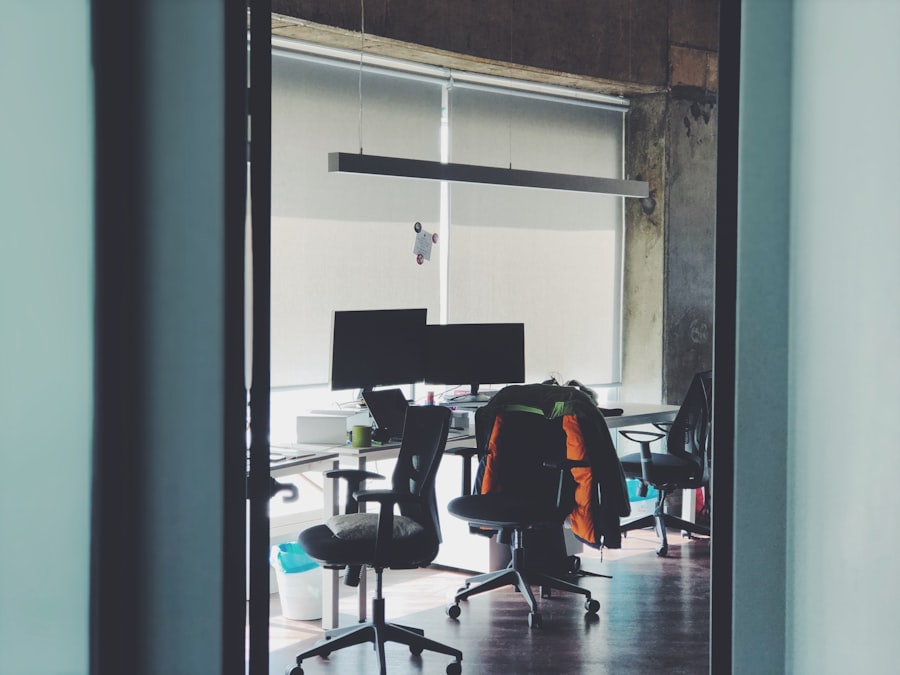As I delve into the world of philosophy, I find myself increasingly drawn to Stoicism, an ancient school of thought that has stood the test of time. Originating in Athens around the early 3rd century BC, Stoicism teaches the importance of virtue, wisdom, and self-control. The Stoics believed that while we cannot control external events, we can control our reactions to them.
This perspective resonates deeply with me, as it emphasizes the power of personal agency in navigating life’s challenges. The teachings of prominent Stoics like Seneca, Epictetus, and Marcus Aurelius provide a framework for understanding how to cultivate inner peace amidst the chaos of existence. What captivates me about Stoicism is its practical approach to life.
It encourages me to focus on what I can change—my thoughts, beliefs, and actions—while accepting what I cannot control. This philosophy serves as a reminder that my happiness does not depend on external circumstances but rather on my internal state. By embracing Stoicism, I am learning to cultivate resilience and equanimity, which are essential qualities in today’s fast-paced world.
The principles of Stoicism offer a timeless guide for anyone seeking to lead a more meaningful and fulfilling life.
Key Takeaways
- Stoicism is a philosophy that emphasizes self-control, resilience, and virtue.
- Digital clutter can negatively impact mental well-being by causing distraction and overwhelm.
- Applying stoic principles to digital minimalism involves focusing on what is within our control and letting go of what is not.
- Practical tips for implementing digital minimalism include decluttering digital spaces, setting boundaries, and prioritizing meaningful activities.
- Cultivating mindfulness and presence in the digital age involves being intentional about our technology use and practicing self-awareness.
The Impact of Digital Clutter on Mental Well-being
The Overwhelming Volume of Information
The sheer volume of information can create a sense of anxiety, making it difficult for me to focus on what truly matters. Digital clutter not only affects my productivity but also my emotional state. I find myself scrolling mindlessly through feeds, comparing my life to others, and feeling inadequate as a result.
The Cycle of Consumption and Isolation
This cycle of consumption can lead to feelings of isolation and disconnection from reality. The constant need to stay updated and engaged with digital platforms can be exhausting, leaving me drained and unfulfilled.
Seeking a Simpler Digital Life
Recognizing the impact of this clutter on my mental health has prompted me to seek ways to simplify my digital life and reclaim my focus.
Applying Stoic Principles to Digital Minimalism

As I explore the intersection of Stoicism and digital minimalism, I realize that the core tenets of Stoic philosophy can provide valuable guidance in navigating the complexities of the digital age. One of the fundamental principles of Stoicism is the idea of focusing on what is within my control. In the context of digital minimalism, this means curating my online presence and being intentional about the content I consume.
By consciously choosing what to engage with, I can reduce the noise and distractions that often cloud my mind. Moreover, Stoicism teaches me the importance of detachment from external validation. In a world where social media often dictates self-worth, I am learning to find value within myself rather than seeking approval from others.
This shift in perspective allows me to approach my digital interactions with a sense of purpose rather than compulsion. By applying Stoic principles to my digital habits, I can cultivate a more mindful relationship with technology that aligns with my values and priorities.
Practical Tips for Implementing Digital Minimalism in Daily Life
| Practical Tips for Implementing Digital Minimalism in Daily Life |
|---|
| Avoid multitasking |
| Set specific time limits for social media usage |
| Turn off non-essential notifications |
| Designate tech-free zones in your home |
| Practice regular digital detox |
Implementing digital minimalism in my daily life requires intentionality and commitment. One practical step I have taken is decluttering my digital devices by removing unnecessary apps and files. By streamlining my digital environment, I create a more focused space that fosters productivity and clarity.
Additionally, I have set specific times during the day to check emails and social media, rather than allowing these platforms to dictate my attention throughout the day. Another effective strategy is to establish a “digital detox” period where I disconnect from technology entirely. Whether it’s dedicating one day a week or a few hours each evening, this practice allows me to recharge and reconnect with myself and the world around me.
During these moments of disconnection, I find joy in engaging in activities that nourish my mind and spirit—reading books, spending time in nature, or simply enjoying quiet reflection. These practices not only enhance my well-being but also reinforce my commitment to living a more intentional life.
Cultivating Mindfulness and Presence in the Digital Age
In an era dominated by screens and notifications, cultivating mindfulness has become essential for maintaining my mental health. Mindfulness encourages me to be present in each moment, allowing me to fully engage with my experiences rather than getting lost in the digital noise. By practicing mindfulness techniques such as meditation and deep breathing, I can ground myself amidst the distractions that technology often brings.
I have also found that incorporating mindfulness into my digital interactions can transform how I engage with technology. Instead of mindlessly scrolling through social media or binge-watching shows, I strive to approach these activities with intention. For instance, when I watch a movie or read an article online, I make a conscious effort to immerse myself fully in the experience rather than multitasking or allowing distractions to pull me away.
This shift not only enhances my enjoyment but also fosters a deeper connection with the content I consume.
Overcoming Distractions and Regaining Focus

Overcoming distractions in the digital age is no small feat, but I have discovered several strategies that help me regain focus amidst the chaos. One effective method is creating a designated workspace free from digital distractions. By establishing boundaries around where I work and how I engage with technology, I can create an environment conducive to concentration and productivity.
Additionally, I have learned to utilize tools such as website blockers and focus apps that limit my access to distracting sites during designated work periods. These tools serve as helpful reminders of my commitment to staying focused on tasks that align with my goals. By implementing these strategies, I am gradually reclaiming my ability to concentrate deeply on important projects without succumbing to the allure of constant notifications.
The Importance of Setting Boundaries with Technology
Setting boundaries with technology has become a crucial aspect of maintaining my mental well-being in today’s hyper-connected world. I have come to realize that without clear boundaries, technology can easily encroach upon my personal time and relationships. To combat this, I have established specific guidelines for when and how I engage with digital devices.
For instance, I have made it a point to avoid checking emails or social media first thing in the morning or right before bed. Instead, I dedicate these times to self-care practices such as journaling or reading—a choice that sets a positive tone for my day and promotes restful sleep at night. By prioritizing these boundaries, I create space for meaningful connections with myself and others while reducing the risk of burnout from constant digital engagement.
Finding Balance: Embracing Digital Tools without Becoming Overwhelmed
Ultimately, finding balance in the digital age requires a nuanced approach that embraces technology while remaining mindful of its potential pitfalls. I have learned that technology can be a powerful ally when used intentionally; it allows me to connect with others, access information quickly, and enhance productivity. However, it is essential for me to remain vigilant about how much time I spend online and what content I consume.
To strike this balance, I regularly assess my digital habits and make adjustments as needed. This ongoing process involves reflecting on how technology serves me versus how it detracts from my well-being. By remaining attuned to my needs and values, I can navigate the digital landscape with greater awareness and purpose—ultimately leading to a more fulfilling life that harmonizes both technology and mindfulness.
In conclusion, embracing Stoicism alongside digital minimalism has profoundly impacted my approach to technology and mental well-being. By understanding the principles of Stoicism and applying them to my digital habits, I am learning to cultivate mindfulness, set boundaries, and find balance in an increasingly cluttered world. As I continue this journey, I remain committed to living intentionally—navigating the complexities of modern life with resilience and purpose.
If you’re looking to boost your productivity while practicing digital minimalism, you may want to check out this article on 27 AI Tools to Boost Your Productivity. These tools can help streamline your workflow and keep you focused on what truly matters. Remember, it’s important to strike a balance between efficiency and mindfulness in today’s fast-paced world.
FAQs
What is digital minimalism?
Digital minimalism is a philosophy that advocates for reducing the time and attention spent on digital devices and platforms in order to focus on more meaningful and intentional activities.
What are the benefits of practicing digital minimalism?
Practicing digital minimalism can lead to improved focus, reduced stress and anxiety, better time management, increased productivity, and a deeper connection to the present moment and real-life relationships.
How can one incorporate digital minimalism into their daily life?
Incorporating digital minimalism into daily life can involve setting boundaries for device usage, decluttering digital spaces, prioritizing offline activities, and being mindful of the impact of digital consumption on mental well-being.
What are some practical tips for reclaiming focus through digital minimalism?
Some practical tips for reclaiming focus through digital minimalism include turning off non-essential notifications, scheduling designated times for checking emails and social media, using digital tools mindfully, and engaging in activities that promote deep concentration and presence.
Is digital minimalism the same as digital detox?
While digital minimalism and digital detox share the goal of reducing digital distractions, digital minimalism is more about intentional and mindful use of digital tools, whereas digital detox often involves a complete break from digital devices for a certain period of time.













Add Comment